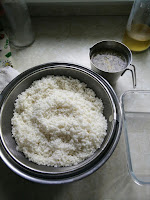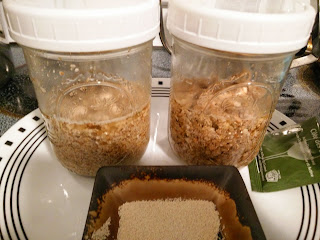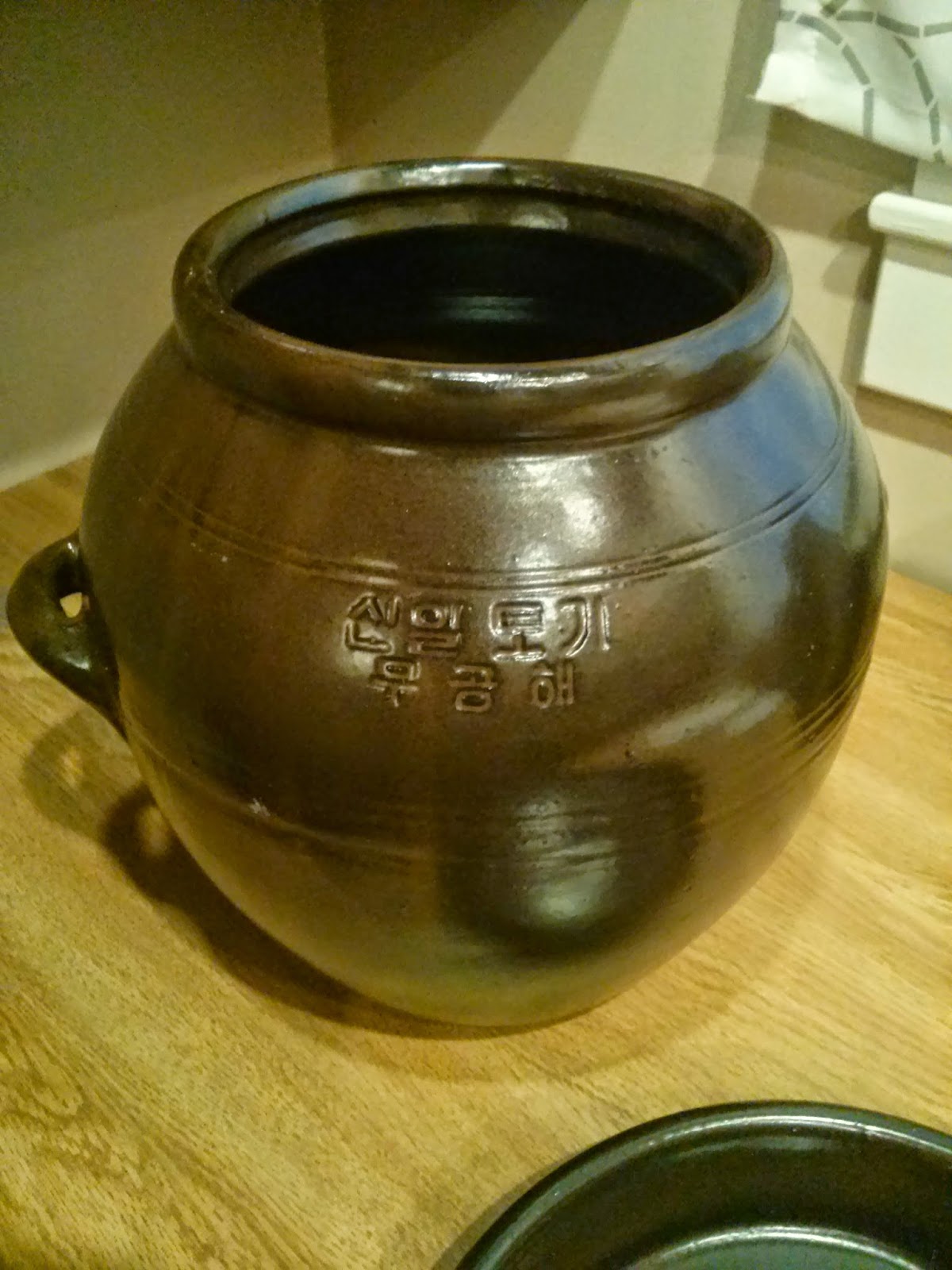Carrot and Pine Makgeolli 당근 솔잎 막걸리
You read it right: carrot and pine makgeolli. This recipe was adapted from a recent addition to my makgeolli library, HOT CRAFT 08 -아름다운 우리 전통: 술 만들기. This book is simply titled, "Making Sool," and it appears to be part of a series called HOT CRAFT about traditional Korean arts. For those who didn't get to read my other posts regarding "sool", it is a generic term in Korean for alcohol, encompassing many varieties and styles.
The book has many interesting recipes for makgeolli and cheong-ju, so this should be the first of many experiments with new ingredients.
The original recipe calls for 2 kg rice, 200 g carrot, 10 g pine needle, 200 g nuruk, 2.5 l water, and 500 ml starter (yeast). I halved the ingredients to make this version.
The above pictures show the preparation of the rice and nuruk, pine needles, and yeast. The rice an nuruk soaked for about 3 hours and the rice was drained before steaming. Pine needles were harvested from a tree in a nearby park and cooked. Their scent was pretty potent as there was sap sticking to some of the needles. The yeast is being activated in 500 ml of room temperature water.
The carrots and rice were steamed together and set aside to cool before mixing with other ingredients.
Pine needles and the soaked nuruk are added in the above pictures, followed by the yeast starter. All the ingredients are then mixed by hand until achieving the consistency shown above.
The mixture is added to a hangari, and the remaining amount of water is poured on top. Not all of the water called for in the recipe was added until this point in the process. The reason being that such a large amount of water would slosh around a lot and be very difficult to manage pouring into the hangari at the end.
Lastly, a layer of Korean hanji 한지 is secured at the top of the hangari wtih a rubber band. This is to prevent any foreign objects (or creatures) from entering during fermentation. The lid of the hangari is also placed on top.
Fermentation progressed as shown above. It took about a week for the makgeolli to ferment from the first picture (top left) to the last (bottom right). This recipe doesn't call for a secondary ferment, but you could technically do one if you wish; it's possible.
Makgeolli is poured from the hangari to a strainer and squeezed through a steamer cloth. It's like milking the rice, but this rice milk is alcoholic.
Finally the drained makgeolli is added to bottles for storage and serving. Here I have sweetened the makgeolli with cane sugar by placing a syrup mixture in each bottle. This adds the characteristic sweet taste that makgeolli is known for, though that isn't a requirement for the drink to be makgeolli. Fermentation still continues in the bottle, even when refrigerated, so there will be some effervescence when the bottles are opened.
Overall the carrot and pine makgeolli turned out well. There were hints of pine and an earthy taste of nuruk that really shone through. The carrot flavor did not infuse as much as I thought, nor did the orange color I was aiming for. I'd increase the amount of carrot by double next time.
Cheers!

























Comments
Post a Comment